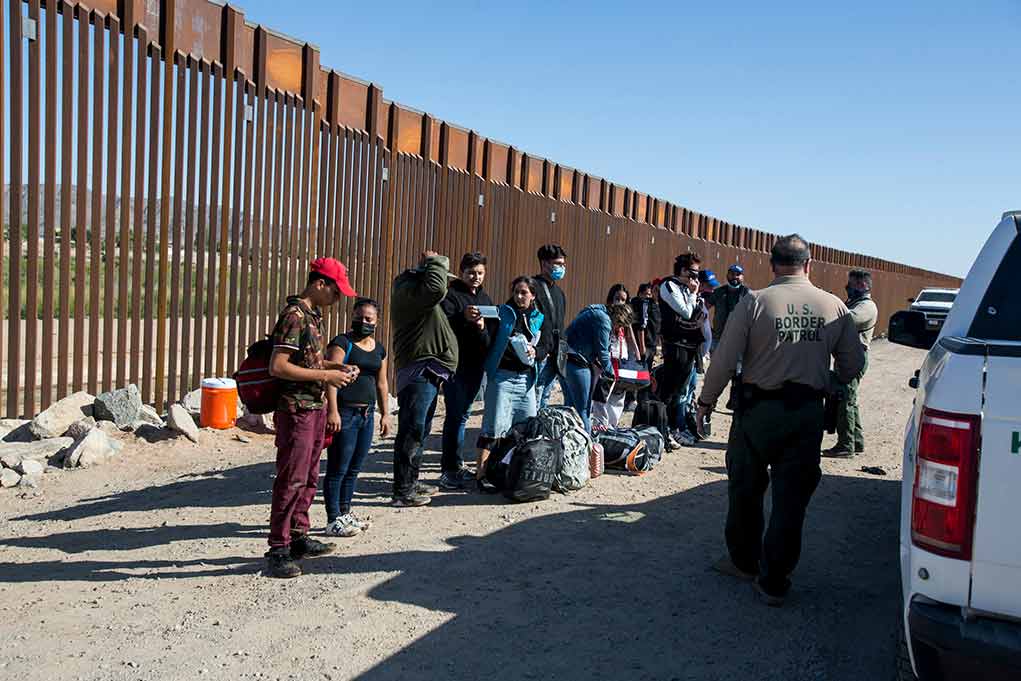
Judge dismisses trespassing charges against 98 migrants caught in Trump’s designated border military zones, threatening a key pillar of the administration’s illegal immigration deterrence strategy.
Key Takeaways
- A New Mexico federal magistrate judge threw out trespassing charges against 98 migrants who entered a National Defense Area, ruling they had no way of knowing they were in a restricted zone.
- The ruling undermines a major enforcement strategy of the Trump administration that sought to use military zones to apply harsher penalties for illegal border crossings.
- Despite the dismissal of military zone trespassing charges, migrants still face separate charges for illegal entry into the United States.
- Defense Secretary Pete Hegseth has pledged to expand military zones to achieve “100 percent operational control” of the southern border despite this legal setback.
- The case highlights the tension between aggressive border enforcement tactics and legal requirements for due process.
Judge Rejects Military Zone Charges in Blow to Border Strategy
In a significant setback to President Trump’s border security initiatives, U.S. Magistrate Judge Gregory B. Wormuth has dismissed trespassing charges against 98 illegal migrants who were detained in a newly established military zone along the New Mexico-Mexico border. The ruling challenges the administration’s strategy of using designated National Defense Areas to deter illegal immigration by imposing enhanced criminal penalties. Judge Wormuth determined that prosecutors failed to prove the migrants knew they were entering a restricted military area, a required element for criminal conviction.
“Beyond the reference to signage, the United States provides no facts from which one could reasonably conclude that the Defendant knew he was entering the NMNDA (New Mexico National Defense Area)” , said U.S. Magistrate Judge Gregory B. Wormuth.
The New Mexico National Defense Area, established on April 18, spans approximately 170-180 miles of public land along the border and is technically considered an extension of the Fort Huachuca Army base in Arizona. A similar military zone covering about 63 miles was later established near El Paso, Texas. Though signs were posted indicating restricted access, the judge found no evidence that migrants encountered these warnings due to the difficult terrain. These dismissals affect nearly 400 similar cases that had been filed in Las Cruces, New Mexico federal court.
Trump Administration Vows to Continue Border
Military Zone Strategy
Despite this legal setback, the Trump administration has signaled it will press forward with its military zone strategy as part of a comprehensive approach to border security. Defense Secretary Pete Hegseth has been particularly vocal about the administration’s commitment to expanding these zones to achieve complete control of the southern border. The establishment of these zones allows military personnel to temporarily detain individuals crossing illegally before handing them over to law enforcement, creating an additional layer of enforcement beyond traditional Border Patrol operations.
“Let me be clear: if you cross into the National Defense Area, you will be charged to the FULLEST extent of the law.” said Defence Secretary Pete Hegseth.
Federal prosecutors may still refile the trespassing charges, which could result in one-year sentences if convictions are secured. Additionally, all migrants involved still face separate charges of illegal entry into the United States, meaning they remain in legal jeopardy despite the dismissal of the military zone violations. US Attorney Ryan Ellison has defended the military zones as vital for national security, reflecting the administration’s position that the unprecedented surge in illegal immigration constitutes a national emergency requiring exceptional measures.
Legal Battle Highlights Challenges in Immigration Enforcement
This ruling illustrates the ongoing tension between the Trump administration’s aggressive approach to immigration enforcement and the legal constraints that govern such efforts. While the administration has characterized the border situation as an “invasion” justifying wartime measures, the courts continue to require that standard legal protections be maintained, including the requirement that defendants must knowingly violate the law to be criminally liable. The public defender’s office successfully argued that the government failed to clearly mark the military zones in a way that would provide adequate notice to migrants.
“The criminal complaint fails to establish probable cause to believe the defendant knew he/she was entering” said Chief US Magistrate Judge Gregory Wormuth.
Major Geoffrey Carmichael reported that military personnel have detected over 150 unauthorized entries in the National Defense Areas but have not directly detained any trespassers. The discrepancy between detection and enforcement highlights practical challenges in implementing the military zone strategy effectively. As the administration works to refine its approach in light of this ruling, it must balance deterrence with legal compliance to create a sustainable enforcement framework that can withstand judicial scrutiny while addressing the crisis at the southern border.












